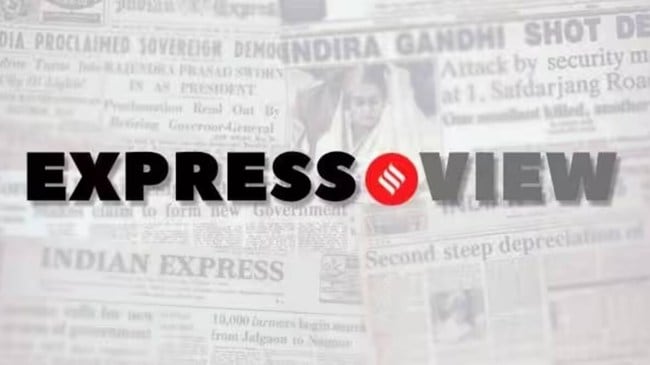Opinion Express view on SCO summit: India should not overestimate possibilities with China and underestimate those with US
India-China-Russia warmth masks gaps and contradictions while Delhi-Washington chill overshadows reality of shared interests.
 India cannot realise its ambition of a multipolar Asia without American cooperation; equally, Washington cannot build a stable Asian and global order without India.
India cannot realise its ambition of a multipolar Asia without American cooperation; equally, Washington cannot build a stable Asian and global order without India. India’s delicate diplomatic manoeuvre to accelerate the normalisation of relations with China — under the shadow of a trade crisis with the US — should not be misinterpreted at home and misunderstood abroad as a rupture in India’s ties with America. Prime Minister Narendra Modi’s hour-long meeting with Chinese leader Xi Jinping in Tianjin on the margins of the Shanghai Cooperation Organisation summit did not, and it could not have, overcome the structural challenges that have hobbled bilateral ties between the two Asian giants for seven decades. Nor do the current contretemps with the Trump Administration over Russian oil purchases imply a breakdown in the strategic partnership with the US that Delhi and Washington have painstakingly built over the last three decades.
It is unfortunate that the rhetoric surrounding India’s engagement with China — “partners not rivals”, Asian solidarity, Global South, strategic autonomy — continues to mask the persistent gap between Delhi’s aspiration for good relations with Beijing and the historic inability to achieve it. Similarly, the noisy public argumentation between Delhi and Washington often overshadows the reality of shared interests with America. In a persistent paradox, Delhi’s foreign policy elite has tended to overestimate the possibilities with China and underestimate those with the US. The breathless TV coverage in India of Modi’s meeting with Xi suggests that not much has changed. Living next to China, India needs not only peaceful coexistence but also good neighbourly relations. But the effort to build such a relationship in the 1950s collapsed in the war of 1962. A renewed attempt in the late 1980s unravelled over the last decade. Military clashes in 2013, 2014, 2017, and 2020 exposed China’s growing assertiveness on the disputed border. A recurring annual trade deficit of around $100 billion underscores the massive imbalance in China’s favour. Beijing’s all-weather partnership with Pakistan — most recently underlined by its military assistance to Rawalpindi in May — has been a constant feature of India’s strategic environment for six decades. None of these issues has or will melt away because Modi had a “good meeting” with Xi. The PM is right to seek a peaceful border, an early resolution of the boundary dispute, and a more balanced trade relationship. But these will take time. Meanwhile, Delhi made it clear in Modi’s statement to the SCO that India would not dilute its longstanding positions to placate Xi: It continues to oppose China’s Belt and Road Initiative, maintains reservations about the China-Pakistan Economic Corridor, and rejects Beijing’s reluctance to confront Pakistan’s sponsorship of cross-border terrorism.
Unlike China, the US is not sitting on Indian territory. It is also the largest destination for Indian exports and a natural partner in science and technology. India cannot realise its ambition of a multipolar Asia without American cooperation; equally, Washington cannot build a stable Asian and global order without India. Yet the focus today is on trade disputes. Here, too, the situation is different from China: India runs a surplus of $40 billion in goods trade with the US. This is an eminently negotiable issue. But the Trump Administration’s public pressure campaign — especially on Delhi’s Russian oil purchases — has made it difficult to pursue quiet, constructive talks. Much as India has remained open to patient negotiation with China on far tougher issues, Delhi has done well to keep the door open for dialogue with Washington. Watch this space.




